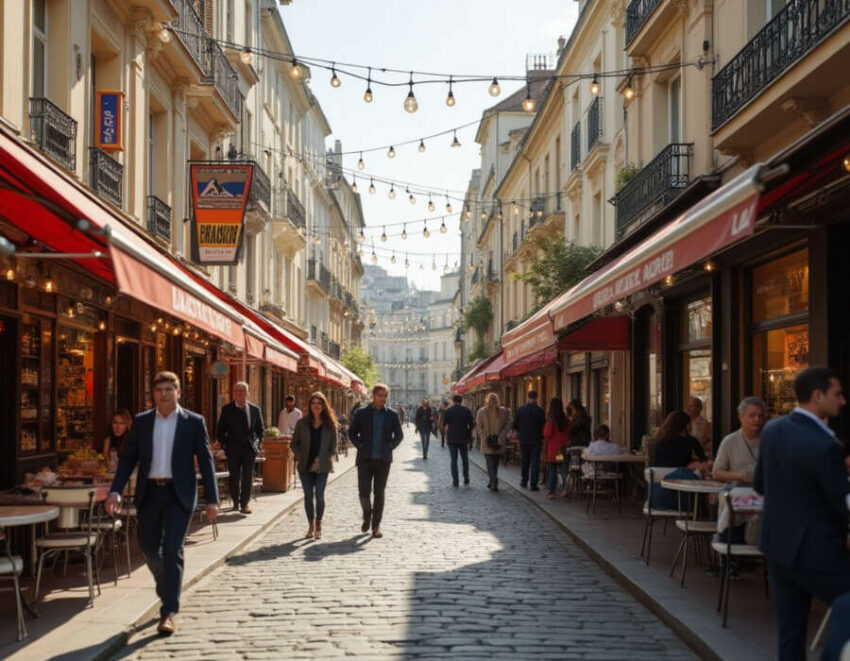Published on
August 20, 2025

France is grappling with a severe overtourism crisis as iconic neighborhoods like Montmartre in Paris, once cherished for their authentic charm, are overwhelmed by an ever-growing influx of tourists. The transformation of these historic areas has led to the erosion of local culture and identity, as traditional businesses are replaced by tourist-focused shops and streets are overtaken by crowds. The pressure on infrastructure and the displacement of residents have sparked a sense of loss among Parisians, who now feel their beloved city is losing its soul to the tourism industry. With cities like Paris seeing millions of visitors each year, the urgent question remains: can these historic gems retain their essence while accommodating the growing number of tourists?
Fifteen years ago, when Olivier Baroin moved into his apartment in Montmartre, the neighborhood felt like a peaceful village nestled in the heart of Paris. Today, however, the charm that once defined the area has all but disappeared, replaced by crowds of tourists and a shift in the local economy. The very essence of the neighborhood has changed, as small, resident-focused shops are replaced by stores catering to visitors, and cafes spill out onto the cobbled streets, amplifying the effects of overtourism.
Baroin, frustrated with the transformation, decided to put his apartment up for sale. The final straw came when local streets were closed to vehicles in an effort to accommodate the influx of tourists. The growing number of visitors had transformed Montmartre from a quiet, authentic Parisian district to a bustling tourist hotspot.
The impact of overtourism extends far beyond Montmartre. Across Europe, cities are grappling with the rapid increase in tourism, straining infrastructure and changing the local way of life. From Venice to Barcelona to Amsterdam, beloved urban landscapes are being altered to accommodate hordes of visitors.
At the Louvre Museum in Paris, tensions have risen among staff, who staged a wildcat strike in June due to overcrowding, understaffing, and deteriorating working conditions. The museum, which recorded 8.7 million visitors in 2024—more than twice what it was designed to handle—is a microcosm of the challenges facing iconic destinations around the world.
Paris, with a population of just over 2 million residents, welcomed nearly 49 million tourists in 2024, a 2% increase from the previous year. With such high numbers, local residents feel like their city is being overrun by visitors. The Sacré-Cœur Basilica and the surrounding Montmartre area, once known for their local flavor, are now frequently referred to as “open-air theme parks” by frustrated locals.
Traditional establishments such as butcher shops, bakeries, and grocery stores are disappearing, replaced by stands selling ice cream, bubble tea, and souvenir trinkets. It’s not just the loss of local businesses that has residents concerned; it’s the complete transformation of the neighborhoods that once embodied the spirit of Parisian life.
Despite the growing frustrations, tourists appear to be relishing the vibrant energy of the streets, especially on a sunny Tuesday when Montmartre’s winding alleys were filled with visitors snapping selfies and buying keepsakes. For many, this is simply part of the Parisian experience. But for longtime residents like Baroin, it’s a loss of the city’s soul.
The overtourism crisis is not unique to Paris. In Barcelona, thousands have protested this year, demanding limits on cruise ships and short-term tourist rentals, which have caused property prices to skyrocket and displaced many locals. Venice has implemented a daily entry fee for day-trippers and placed caps on the number of visitors allowed into the city. In Athens, authorities have imposed a daily limit on the number of visitors to the Acropolis to protect the ancient monument from the overwhelming pressure of mass tourism.
Urban planners are raising alarms about the future of historic neighborhoods. Many warn that these areas could become what some describe as “zombie cities” – attractive yet lifeless, with residents replaced by transient visitors who contribute little to the local community. In the face of these changes, some European cities are attempting to mitigate the impact of overtourism by tightening regulations on short-term rentals and unlicensed accommodations. In Paris, for example, authorities are cracking down on Airbnb properties in an effort to preserve residential life in neighborhoods like Montmartre.
But despite these efforts, the pressures of tourism continue to escalate. As the world’s population is projected to reach nearly 10 billion by 2050, with the middle class expanding and travel becoming more affordable, cities like Paris are only going to witness an increase in visitors in the coming years. Low-cost flights and social media platforms are making once-hidden gems into must-see destinations, and this trend is only accelerating.
For residents of these cities, the question is no longer how to attract tourists but whether there will be any space left for them at all. With more people flocking to the world’s most iconic cities, the delicate balance between tourism and local life is being tested. Residents of places like Montmartre are beginning to ask: can a city retain its identity and charm while accommodating the ever-growing number of visitors who are eager to experience it?
France is battling overtourism as Paris’ historic neighborhoods like Montmartre are overtaken by crowds, displacing local culture and businesses. The growing pressure threatens to erase the city’s authentic charm.
As overtourism becomes an increasingly urgent issue, the future of these cities remains uncertain. What is clear, however, is that something needs to change. Local communities and authorities must work together to find solutions that prioritize the well-being of residents, preserve cultural heritage, and ensure that tourism remains sustainable for years to come. Without such measures, the very cities that draw millions of tourists each year risk losing what made them so special in the first place.





